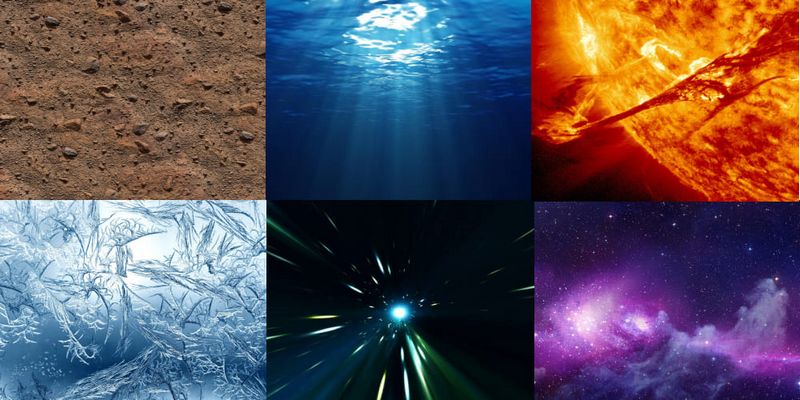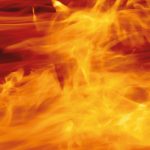ExtremeMedia
Specialist in fiber optics for extreme environments
We have developed a strong expertise in extreme environments. Since 1951, we have been designing solutions for extremely low or high temperatures, extreme pressures ranging from ultra-high vacuum to hyperbaric, and radiative, corrosive, and abrasive environments.

Long-standing expertise in optical fibers that goes far beyond harsh environments
A harsh or extreme environment refers to harsh or hostile conditions in which humans or systems must operate. These environments may present physical, climatic or geographical challenges that require specific adaptation.
These conditions can affect the health, safety and operating capacity of infrastructures and their equipment. This is where fiber optics comes into play, in all those places where electronics cannot survive or present disadvantages.
Optical fiber, a symbol of reliability and durability
Optical fibers offers significant advantages in extreme, hostile or hazardous environments for humans, because it is resistant to extreme temperatures, tolerant of chemicals, insensitive to vibration and shock, ensures operator safety and offers exceptional reliability and durability.
It also offers other advantages, such as:
- High bandwidth/span>, enabling large volumes of data to be transmitted at high speeds (data centers, scientific research facilities, or video surveillance networks),
- Data security, because fiber optics are intrinsically secure (sensitive applications such as government networks, defence systems or financial services),
- Immunity to atmospheric disturbance, so it can be used in harsh outdoor environments,
- Long transmission range without significant signal loss (applications requiring extensive connectivity, such as telecommunications networks, critical infrastructure, surveillance networks and security systems).
Optical fiber is the solution of choice in extreme, hostile or dangerous environments for human beings
The use of fiber optics means that transmission equipment can be moved away from hazardous environments, reducing the risk to operators. For example, in nuclear facilities, optical fibers can be used to transmit data from highly radioactive areas without exposing operators to high levels of radiation.
When properly packaged (choice of coating, protective cladding, sealing technology, etc.), optical fibers offers a number of advantages in such environments.
Optical fibers offer significant advantages in extreme, hostile, or human-hazardous environments, including resistance to extreme temperatures, chemical tolerance, insensitivity to vibration and shock, operator safety, and outstanding reliability and durability.
High temperatures: Optical fibers can withstand extreme temperatures of up to 1 000 °C. It can be used in environments such as deserts and industrial installations, where temperatures can reach extreme levels, without suffering any degradation in performance.
Cryogenic environment: Our assemblies based on fiber optic can operate in cryogenic environments down to 1,5 K. It can be used for quantum, space or industrial applications.
Extreme pressures: Our assemblies are specially designed to withstand hyperbaric conditions of up to 5 000 bar and can be used for detonation or deep-water applications.
Vacuum and ultra-high vacuum: Our fiber-optic solutions for vacuum and ultra-high vacuum are hermetically sealed down to 10-11 mbar. They can easily be used in enclosures where the vacuum is very high or in space measurement instruments.
Chemical tolerance: Optical fiber is resistant to chemical and abrasive environments, such as acids, solvents or aggressive chemicals. It can be used in industrial environments where hazardous chemicals are handled or in chemical processing plants.
Rays and radiation: When exposed to radiation, our optical fiber assemblies can withstand up to 1 GGy and UV solarisation (200 nm). They can be used for space applications, nuclear research or in medical facilities.
Vibrations and shocks insensitivity: The optical fiber is insensitive to mechanical vibrations and shocks. It can easily be used in environments subject to constant vibration, such as construction sites, heavy plant, offshore platforms or moving vehicles.
High voltages : Well protected, our solutions are completly neutral and can withstand a dielectric breakdown of up to 1 kV/cm. They can be found in power line monitoring, control and automation applications.
SEDI-ATI fiber optic components are widely used in extreme environments
We address complex applications for the defense and aerospace markets, as well as for the energy, laser industry, data communications, research, and medical markets.
Our fiber assemblies are used in niche applications in extremely aggressive and hazardous environments, such as those found in the oil and gas industry, nuclear power plants, electric utilities, or the maritime field, for example. Applications for our components are as diverse as opto-pyrotechnics, downhole oil well pressure analysis, endovenous ablation catheters, or high-power lasers that can cut and weld steel.
As we design and manufacture our optical components almost exclusively to our customers’ specifications, our wide range of products is ultimately the result of careful consideration of their requirements.
Our main product lines include:
- Multimode fiber optic couplers
- Multimode wavelength multiplexers
- Hermetic fiber optic feedthroughs for pressure and vacuum applications
- Fiber optic bundles for spectroscopy and reflection probes
- Disposable fiber optic spools for wire-guided vehicles
- Special fiber optic cables and patchcords
- Optical connectors and adapters
- Medical probes and fiber needles








